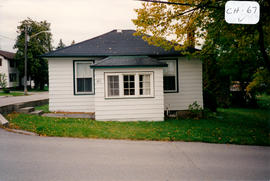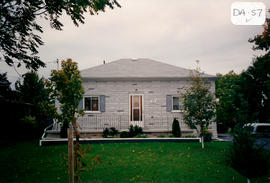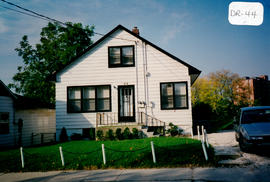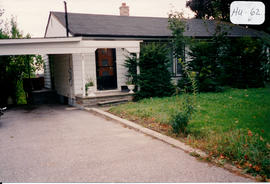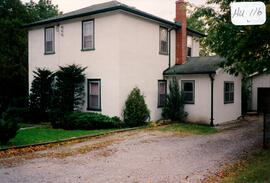- CA BWGPL GJ-HB-2017-03-17-14-2017-03-17-15
- Part
- 1995
Part of George Jackson fonds
The building that is located at 67 Church St. (on the southeast corner of Church and James Streets) was built pre-1900 in the Ontario Vernacular Cottage style. It was moved to this site many years ago. The Robinson family once lived in this house. Mr. Robinson worked for Spence Lumber and he belonged to the Band. He had a daughter named Jean.
The one-storey, three-bay cottage has a rectangular plan with a centre hall. A box hall was typical for this style. It also has a symmetrical façade and a shallow-pitched, hip roof. The enclosed porch (added after the house was moved to this location) has a hip roof with a grade level entrance. It has a simple entrance with a single door opening to one side of the porch. Single windows to the primary rooms are found on each side of the porch. Double-hung, 2/2 windows appear to be original. The building has wood frame construction, wood shiplap siding, and a parged, stone foundation. There is a single, brick, masonry chimney at the exterior south wall. According to the 2000 inventory, this modest cottage probably had few decorative details originally. It notes that other than the building’s form, few existing building elements appear to be original. Existing James Street appears to be built at a higher level than this lot. This indicates that the house was moved here before the street was paved or town services were installed. (1, 3)
George Jackson

